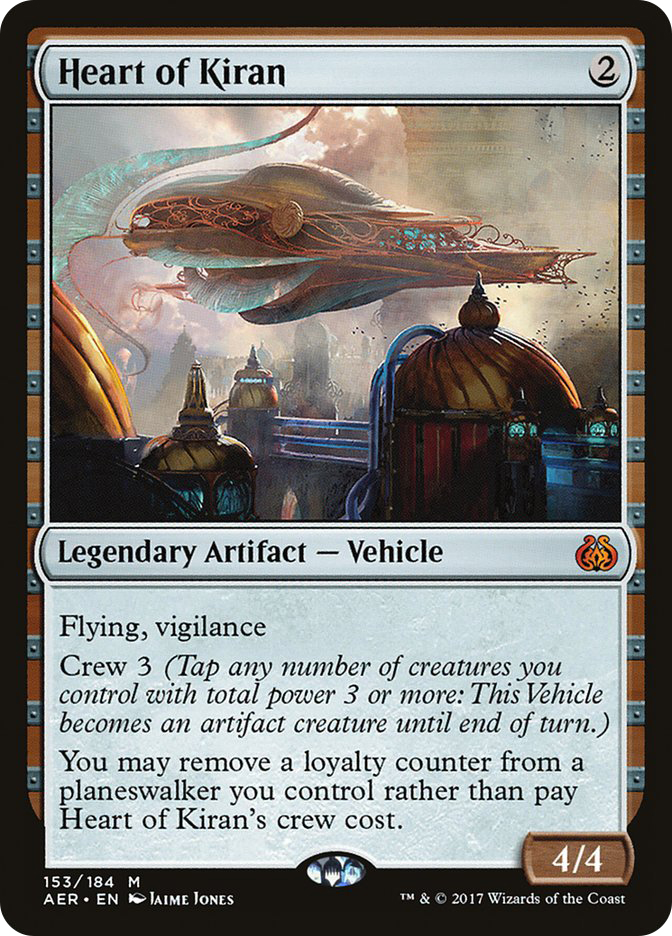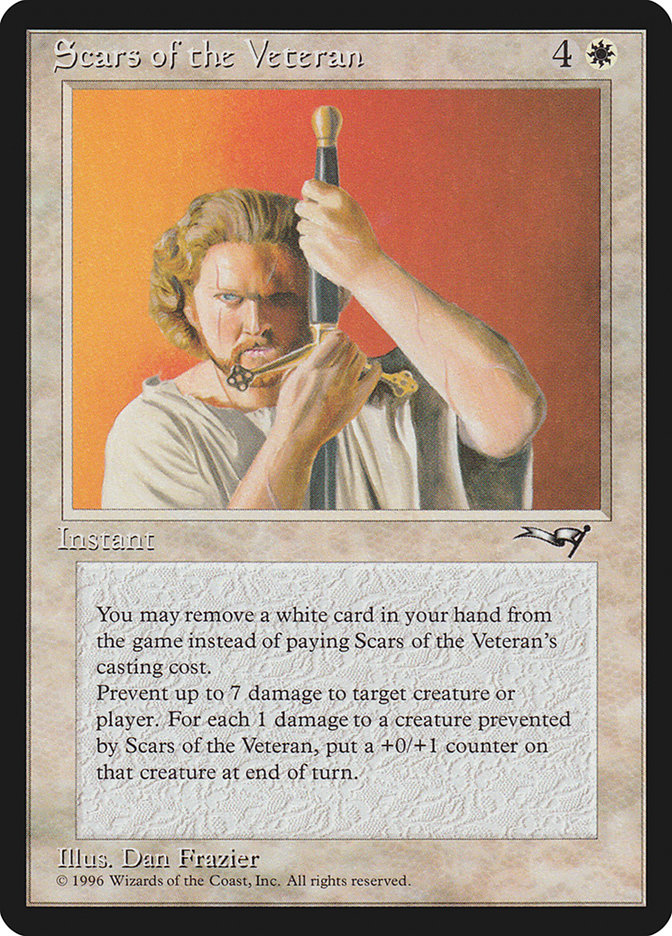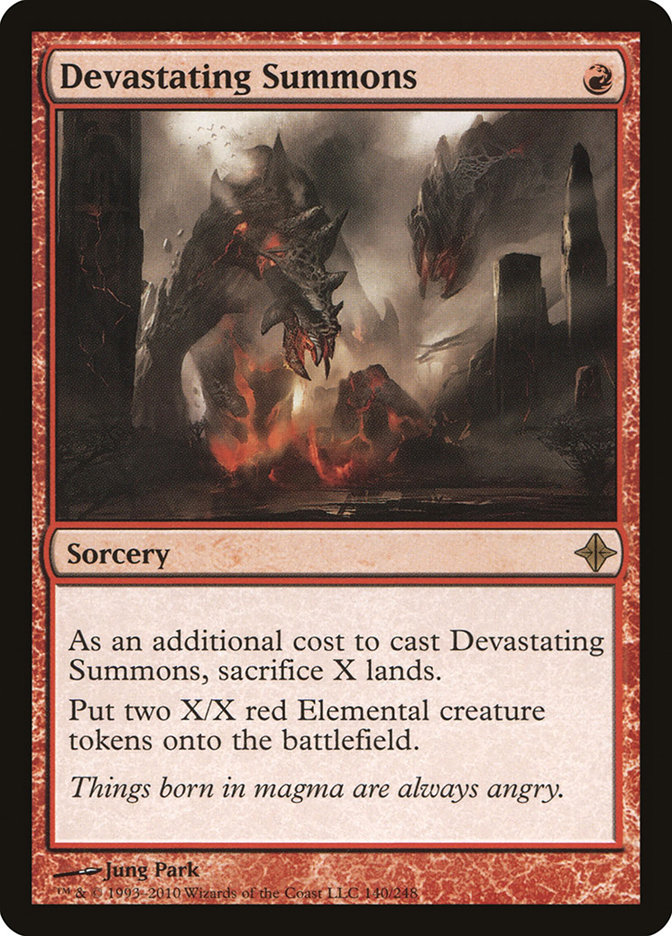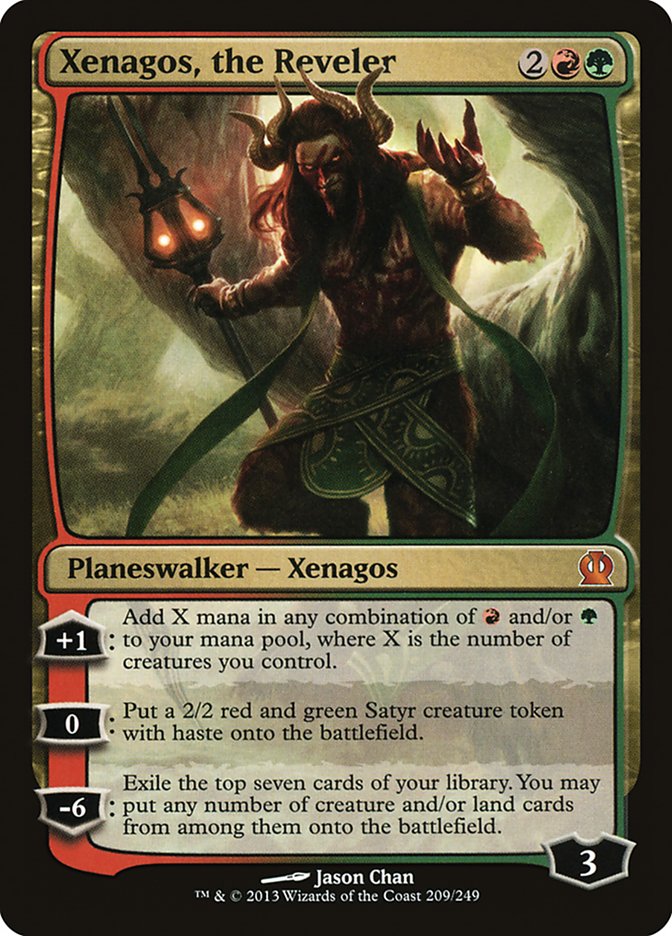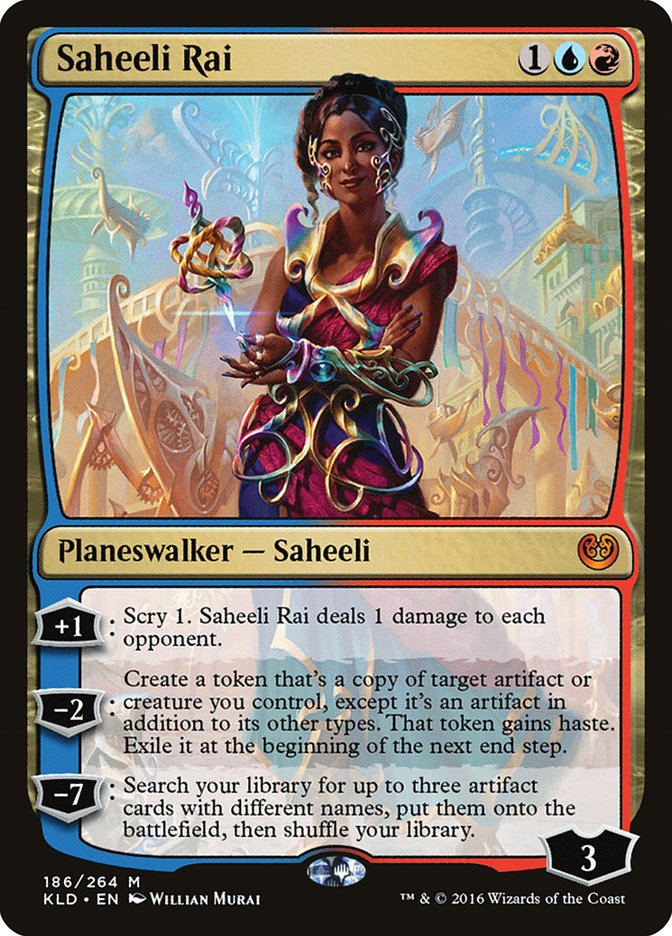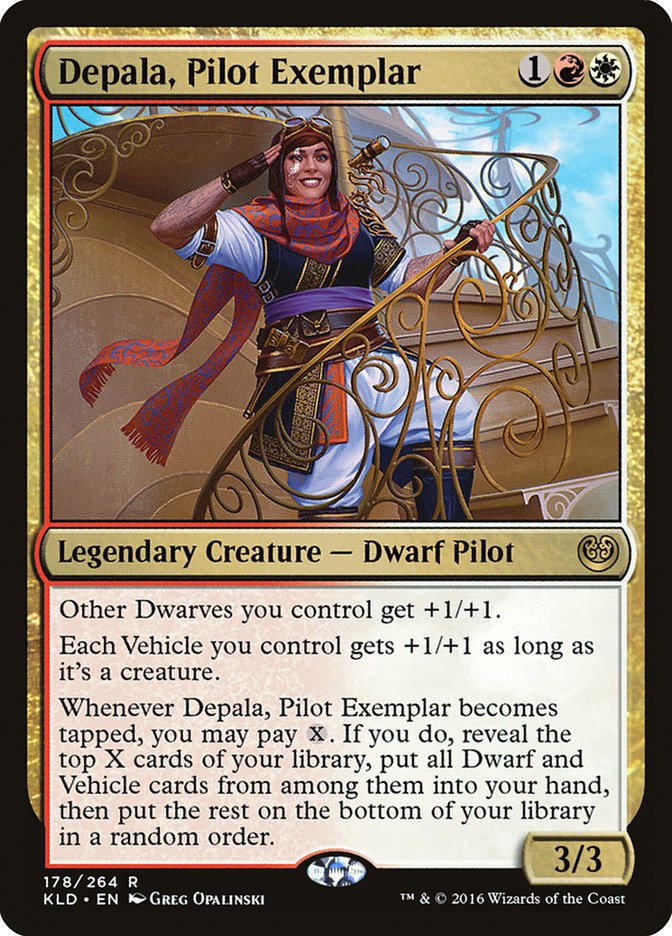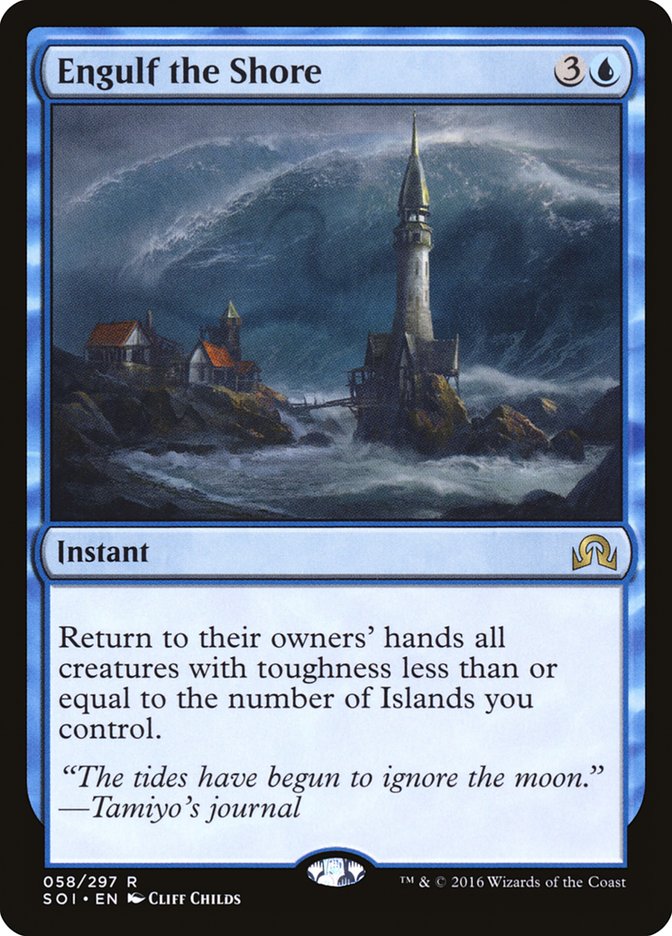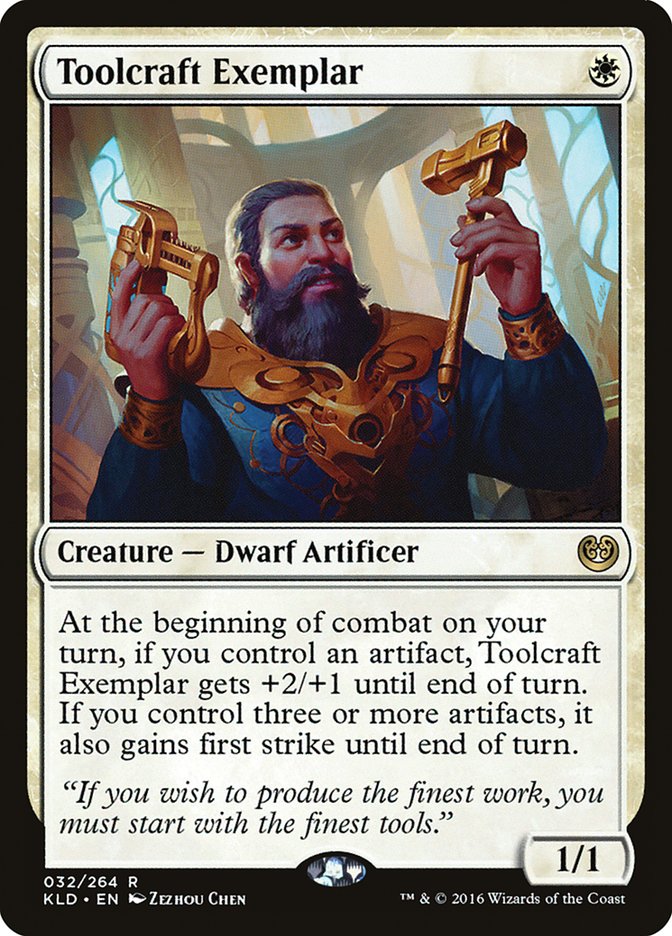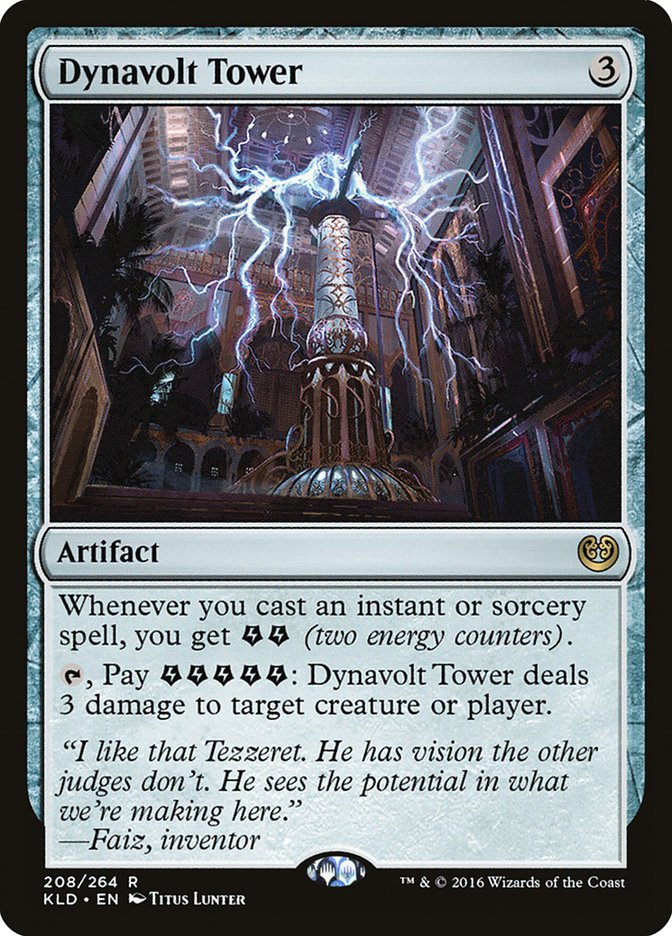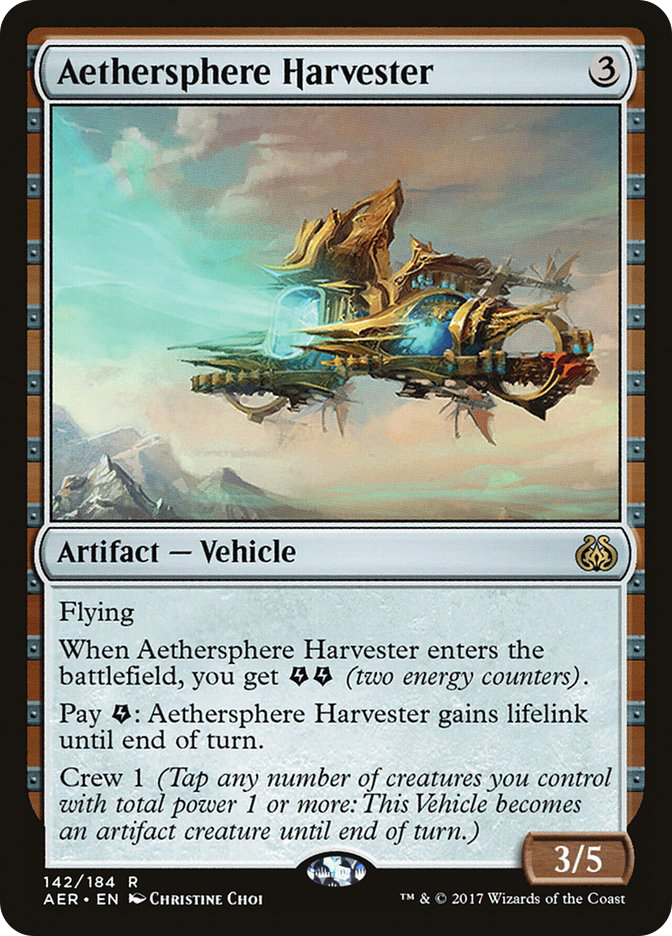A natural thing for many (most?) people, when confronted with convincing evidence of an uncomfortable, perhaps unexpected, and at-least-medium-significant truth, is to proceed along some cascade of the following totally understandable suite of responses:
- Anger at the outcome, perhaps undergirded by feelings of powerlessness or inadequacy as a result of not being able to (first) anticipate and (second) adapt to an emerging reality.
- Confusion about what to do, typically resultant from the same incomplete and/or inexact models and heuristics that led to said pants-kick of a surprise in the first place.
- Impulse to act, potentially as a mechanism to behaviorally, if not cognitively, resolve the dissatisfying emotional gout of the preceding two bullet-points.
- Flirtation with despair, as the felt inefficacy of the impulsive action coupled with the resentment associated with every run-of-the-mill head-bangingly-variance-intensive problem metastasizes into the kind of spiritual resignation most affiliated with e.g. proto-paunched mid-career actors dutifully hawking Brawny towels, the logo facing square towards the camera.
The above progression, performed like some kind of ritualistic martial-arts kata (and mimicking it, in the opinion of this hardly-humble Content Provider, in terms of overall effectiveness) has by no means limited itself, as of late, to concerned followers of Pro Tour Aether Revolt hungry to enjoy some fun/interesting/nonrepetitive games of Standard. Still, witnessing the dominance of Mardu Vehicles, which eclipses Pro Tour Oath of the Gatewatch Eldrazi and Pro TourParis Caw-Blade, despite coming off the most sweeping array of Standard bannings since Mirrodin block, one enjoys a very concrete case of how this process plays out absent a clear set of alternatives to explore.
Still, while we may not be spooning ourselves a heaping plate of possibilities from the erstwhile Old Country Buffet of Deck Diversity, at least one highly-leveraged opportunity does present: namely, the chance to take a big step back, focus on the problem, understand it deeply, and adjust ourselves to the new reality inside which we now operate.
Look. I’ll cut the crap. I’m out of the game as both a player and as a writer (well, erm, again, as a Content Provider, which my putative attempts to self-express and/or truth-examine via DailyMTG column-slot sort-of-embarrassingly revealed for the better part of four years). I neither possess nor can express the playtest-data-validated battle-hardened strategy with which to slice through the opposition like so many cucumber-cutting Ginsu commercials.
But what I have started to do, given the ontological reality of my more-or-less total irrelevance within the ecosystem to which I dedicated the greatest part of my younger self’s attention/vigor/ energy/insight/emotive attachment/etc., is to cultivate a small cadre of students whose hunger for the game is waxing as my own star finishes coughing/sputtering/gasping/gentle-going its way into the long good sad bland night.
One of those students (and I use the term in a manner that maximizes the appearance of my own importance, which is of course in truth minimal and of course reveals its own sort of desperation in its own independent way) is someone whom you’re fortunate to read several times weekly dissecting draft picks on this site. Another, however, is the astronomer, planet-sleuth, empath, genius, badass, and crusader-for-inclusiveness-in-higher-education John Asher Johnson, who invited me up to Cambridge for the Pro Tour this past weekend to sip scotch and drink coffee and delve into the process of figuring out how a format works in parallel with that format’s own emergence. That is, we were going to watch matches and brew and play and watch matches and brew and play in real time, updating our assumptions continuously and testing our conclusions in a trio of local tournaments that were scheduled to occur each weekend evening.
This seemed cool to me because I’d never actually done anything like this before. When I was an active PTQ grinder, there was no Twitch and no YouTube really and so generally one received coverage from a static set of print articles published after the Pro Tour had already ended (assuming one was not playing at the event itself, of course). After that, I went to Wizards and so didn’t really have my nose to the ground re: the two-to-three-years-in-the-past real-world [sic] competitive scene in the same kind of browser-refreshing Red-Bull-chugging way, and then most recently I was of course casting at the Pro Tours saying “devastating” and “Zhenagos” and nodding my head over-vigorously so as to nudge a reticent Deck Tech victim to direct his utterance at least vaguely up and toward the camera.
Point being, it sounded awesome to watch coverage and theorycraft and apply that knowledge towards defeating opponents, plus John/his wife/his kids are one of the only even vaguely functional/caring/loving/interesting/mutually-nurturing-and-bettermaking families I’ve ever shared space with on the regular. So, a good dose of life-affirmation etc. etc.
Anyway, as part of that process, we tore through those tournaments like wildfire. They weren’t major or competitive enough to really reveal anything in ways that I have any pretense of citing as authoritative, but they were significant enough to evince to me that our reasoning was sound. Plus, and maybe more to the point, I think that (coming at you with the not-so-oblique cultural-moment reference again) the skill of differentiating signal from noise in real time amidst a climate of deep complexity and confusion and ambiguity and uncertainty and omnipresent indecipherable total mind-eroding noise is probably pretty salient right now.
Also, Heart of Kiran is a hell of a Magic card.
Day 1
I get in early Friday and none of the coverage is up, really; certainly there aren’t any decklists. Still, I came with a plethora of vaguely-informed-yet-assumptions/predictions. Specifically:
- I thought a fair number of people were going to put together bad/non-viable Jeskai Flash-ish Saheeli decks. These decks seemed bad because a) people overvalue Jeskai Flash strategies generally, b) the combo is really quite at odds with the whole strategy of the rest of the deck, and c) there didn’t really seem to be a good time to cast Glimmer of Genius.
- I also thought Rishkar, Peema Renegade (which I freaked out over on Facebook when it was spoiled, to many eyerolls) didn’t remotely resemble fair, especially in concert with Winding Constrictor and of course Big Daddy Verdurous Gearhulk.
- Weldfast Engineer seemed tailor-made to crew basically everything, and appeared at least to me to form the cornerstone of some kind of new R/B strategy (Toolcraft Exemplar, Thraben Inspector, and Veteran Motorist made that card suspect to me in Mardu Vehicles).
- The predominant amount of ‘leveling’ that was going to happen—i.e. incremental tempo-positioning jockeying—mainly involved one’s vulnerability to and adaptation around the Magic card “Shock.”
I also kept trying to just jam Scrapheap Scrounger into decks but I didn’t really peg it as a format-defining card. The big thing I got wrong, in retrospect, was that I failed to realize how rarely Grasp of Darkness actually kills a Heart of Kiran. As such, coupled with my lack of awareness of the in-plain-sight Scrapheap Scrounger, I thought some Torrential Gearhulk strategy (but not a Jeskai Saheeli strategy with a bunch of irrelevant permanents) would probably work out really nicely in the void left by Copter/Emrakul/UW Flash. That therefore pushed me in the direction of valuing “value”—the two-for-one dance—more than is probably correct given the deep swinginess of this format.
Anyway, so these assumptions plus the SCG Tour results led me to think we’d be seeing a fairly diverse, relatively midrange-ish field with the potential for some blowout starts (Winding Constrictor plus Anything; Toolcraft Exemplar plus Heart of Kiran or Heart plus Weldfast Engineer) and hyper-combo finishes. This led me to construct the following machine, which was an absolute brickhousing on Day 0:
Creatures (27)
- 2 Woodland Wanderer
- 2 Tireless Tracker
- 3 Verdurous Gearhulk
- 4 Longtusk Cub
- 4 Voltaic Brawler
- 3 Bristling Hydra
- 1 Whirler Virtuoso
- 4 Servant of the Conduit
- 4 Rogue Refiner
Planeswalkers (2)
Lands (21)
Spells (10)

This deck more or less reflects the typical philosophy I undertake in wide-open formats:
- Be fundamentally sound. Decks are going to interact and the plan is going to get disrupted, so do things to mitigate mana flood and mana screw and make sure you can draw cards and get value so that you’re not stuck drawing blanks or overly-synergy-dependent spells for turns at a time.
- In this case, you’re playing 25 “lands” with ten lands (Hub, Fumarole, and the in-my-opinion-just-absurdly-pushed Attune with Aether) capable of generating value. You have access to four colors of mana with fourteen potential sources of your lightest color (white) and sixteen turn-1 sources of green mana for Attune with Aether.
- You have eight cards that literally draw cards in Tireless Tracker, Tamiyo, and Rogue Refiner, with four of those cards providing a continuous source of advantage. Additionally you have eight energy sinks in Longtusk Cub / Whirler Virtuoso / Bristling Hydra, along with four partial energy sinks in Voltaic Brawler (Servant turns energy into mana, not gas, which is why it doesn’t count here).
- Be fundamentally powerful. Play a reasonable assortment of the format’s most powerful cards or, barring that, most powerful effects. Try to be capable of winning the game off the back of one or two spells that “stick.”
- The difference between the format’s “most powerful cards” and “most powerful effects” might not be obvious. An example: Scrapheap Scrounger and Thraben Inspector are examples of powerful cards but not powerful effects. Woodland Wanderer and Gonti, Lord of Luxury are examples of powerful effects but not powerful cards. Gideon, Ally of Zendikar and Verdurous Gearhulk are examples of both. (Blossoming Defense is also an example of both, but for whatever reason the consensus doesn’t seem to be that that card is totally unreasonably multiple-axes-worth-of-busted, so I’m avoiding citing it as an example here, even though I literally choked up coffee when I saw that card revealed last year.)
- Cub, Tracker, Hydra, Wanderer, and of course Gearhulk all have the potential to be singlehandedly game-ending, while Attune with Aether, Rogue Refiner, Servant of the Conduit, Aether Hub, and Botanical Sanctum are all just very pushed Magic cards; Tamiyo meanwhile is uniquely high-upside in exchange for being hard to cast, so you’re getting a de facto power-level payoff by being able to cast her and cast her easily. (Make sure to read Tamiyo’s first ability three or four times, because it doesn’t do what you think it does, I promise you.)
- Harnessed Lightning isn’t just the format’s most powerful two-mana removal spell in that (in the proper context) it kills anything no-questions-asked; it’s also a split card—which matters because the specific interaction where this is most powerful (i.e. in concert with Bristling Hydra) is also precisely the situation where another comparable removal spell (i.e. Grasp of Darkness) would be most dead/most of a liability.
- Be fundamentally proactive. Even in a midrange deck or a control deck, be capable of decisively winning the game in short order.
- Brawler and Cub put an extremely large amount of pressure on opponents and allow this deck to leverage the did-I-read-that-correctly 3/2 body of Rogue Refiner better than a deck that’s throwing down less of a clock.
- Servant of the Conduit allows your “midrange” threats to become early-game threats on the play, while allowing you to avoid falling too far behind on the draw.
Some other format-specific variables appealed to me about this deck:
- The hard-hitting nature of the deck’s early-game threats means that they will occasionally eat cards like Unlicensed Disintegration that are normally reserved for more expensive spells. This allows the oft-forgotten Woodland Wanderer to survive despite this being a relatively removal-heavy format; I also appreciated that it dodged Grasp of Darkness, though that winds up mattering less than I expected it would.
- Although Brawler and Servant are quite vulnerable to Shock, the fact that they leave energy behind means they’re not as bad as other two-drops would be in a similar position.
- I like being able to accelerate into Verdurous Gearhulk rather than relying upon it at five, and accelerating with Servant rather than a card with a target on its head like Rishkar allows that interaction to occur more reliably.
- In addition to Tamiyo being powerful in general, the card seemed specifically well-positioned due to the format’s tendency to lean on individual gassed-up threats (Heart, Mindwrack Demon, Gideon).
The sideboard is obviously a little loose; at least one copy of Root Out should have been a Release the Gremlins and the two copies of Ceremonious Rejection were probably a little conservative. But looking at the big trends of Day 1—B/R and G/W significantly overperforming, B/G and Mardu Vehicles showing up and massively outperforming Jeskai Saheeli (which is not a disastrous but not a great matchup for us), cards that are bad against us like Walking Ballista seeing a significant amount of play—I felt good about our format-reading capacity given the level of information we had. This was confirmed when the deck whipped through tournament matchups consisting of W/R Vehicles, B/G Counters, U/B Improvise, and Temur Energy like a tropical depression, 4-0 in matches and 8-1 in games.
Unfortunately, the deck is in practice just a pile of wet hot garbage against Mardu Vehicles, meaning we got to enjoy quite a few Learning Moments as we headed into the second day of Pro Tour play.
Day 2
Because the Pro Tour was in Dublin, we woke up to see the tournament already well underway. Juza’s Jund Energy deck was making waves—one of the key innovations being the construction of his “Shard” manabase—and the dominance of Mardu Vehicles was becoming increasingly clear. This made sense to me, as I didn’t really buy the conventional wisdom that B/G had an edge against Mardu. Walking Ballista is only particularly good against Toolcraft Exemplar, and because of Depala, Veteran Motorist, and Gideon, both Grasp of Darkness and Mindwrack Demon are sort of embarrassing against Heart of Kiran.
Meanwhile, an uptick in the adoption of Fatal Push meant that your Big Daddy Kane, Winding Constrictor, was less likely to survive. The bigger thing though is how behind B/G is on the draw; you have no one-mana threats, and your two-mana threats (unlike e.g. Servant of the Conduit) don’t allow you to recoup your tempo even if they are extremely powerful in the abstract. Tireless Tracker, Nissa, Scrounger, Rishkar, and Glint-Sleeve Siphoner in the energy builds are all significantly weaker when your opponent already possesses a developed board; meanwhile, Pia Nalaar makes it hard to stabilize behind e.g. a Gearhulk-enfattened Mindwrack Demon and Unlicensed Disintegration (unlike Grasp of Darkness) allows an edge to be pressed while still managing to deal with threats. The Sylvan Advocate builds are better about this, and I actually adore Catacomb Sifter for precisely this reason, but those seemed to be in the minority.
My suspicion was that G/W had been overperforming Day 1 due to a strong Mardu Vehicles matchup, a suspicion that was confirmed when I talked to Ari Lax and he basically told me everything about the format. While I might have been deeply embarrassed that I was doing all this deriving-of-truth-from-first-principles-in-real-time when I could have simply asked people who knew what was going on what was going on, there’s a part of me that still adores the joy of exploration.
Meanwhile, two decks I suspected were actually very good—Dynavolt Tower-based U/R/x control and B/R Aggro, both of which had respectable Day 1 numbers—were precisely the kind of decks that never catch on in the mainstream. I wasn’t going to play Mardu because we didn’t own any Hearts of Kiran, but it was very clearly the gauntlet deck to test new ideas against—with B/G the second “boss fight” for any new idea that wanted to hold salt (my favorite B/G list was Brad Nelson & Co.’s because of Servant of the Conduit, but I suspected that wouldn’t be mainstream).
The bummer about Mardu Vehicles was that it crushed virtually everything that wasn’t especially engineered to beat it. An examination of why this is so can be had from observing why it just trounces the Four-Color Energy deck I had made the previous evening. In particular, there are three topline issues:
- First, fair decks have to do a lot of work to do what Mardu Vehicles manages to do just by announcing its spells. I am thinking specifically of the backwards-bending involved in landing a manabase and finding an accelerant to cast Wanderer, Hydra, and to a lesser extent Gearhulk, while also needing an energy source for Cub. Meanwhile, Mardu Vehicles just casts Heart of Kiran or Cultivator’s Caravan, which are comparably-sized, come down significantly earlier, and enable a ton of artifact synergies.
- Second, Shard manabases are just where it’s at. Fastlands and creature-lands are so overwhelmingly better than the allied-color alternatives it’s difficult to know where to start, especially aided by Aether Hubs and the insane Spire of Industry. Four-Color gets to play creature-lands and fastlands too, of course, but part of the appeal of the deck was that Attune with Aether and Servant allowed cool four-color manabases with ostensibly an uptick in power associated with that. When Mardu Vehicles has access to such options simply by deploying its regular lands, you realize one of the big edges you thought you had isn’t actually that big of an edge.
- Third, the deck gets on the battlefield early and just does not let up until you’re dead. The deck plays out completely differently when it’s able to lead with a Toolcraft Exemplar, which is just an obscene card, and curving it into Heart of Kiran is very close to unbeatable—even when you have the Shock, it’s not like it has gotten you ahead! Meanwhile, Thraben Inspector remains one of the best cards in Standard, and the fact that it fuels so many synergies is icing on the cake. The Energy deck started from further behind virtually every game, and that’s a difficult place to be when the opponent is hurling two-mana 5/5 fliers and three-mana 6/6s that also tap for mana the turn you cast them.
A couple of other advantages matter significantly too, of course. The Mardu Vehicles threat base is so unbelievably resilient. You only have to expose Vehicles to removal when you want to, Scrounger never dies, Motorist and Depala generate value, Pia represents multiple threats, Gideon is literally indestructible, etc. The deck’s creature-lands (if they’re playing them) are also the good creature-lands and allow the deck to crew Vehicles from an empty battlefield.
Meanwhile, you have access to what are three of probably the four best removal spells in Standard in Shock, Fatal Push, and Disintegration ((the other is Harnessed Lightning), which allow you to both regain tempo on the draw and avoid getting blown out by something like a Torrential Gearhulk while still giving you some protection against the Saheeli Rai / Felidar Guardian combo as splash damage. Finally, your card power is just through the roof, meaning—especially in a format like this one where you want to mulligan aggressively due to the variance of the draws—you’re going to win a lot of games just by tapping four mana and announcing Gideon, like we’ve been doing in Standard for a hot minute now.
What was happening again and again was this Faeries-like effect where you’d be unable to establish much of a significant battlefield presence and suddenly you’d be getting hit for like eleven damage—without the Mardu player really having a “shields down” moment due to Heart of Kiran’s vigilance and Gideon’s ability to make tokens. This phenomenon was exacerbated by the range that a card like Unlicensed Disintegration provides, or the inability to trade profitably with a Scrounger. It was also capable of casting multiple spells in a turn via cards like Caravan and Thraben Inspector, which was something most of the other decks in the format weren’t capable of doing.
One thing I like to do when a deck’s incredibly dominant is build decks that don’t seem to be matching up well and see exactly why they tend to be losing. The losses by the Temur Energy deck were illustrative, but I also built a couple of other things:
Spells (41)

This was based on an interview posted on the WotC site about how a deck similar to this crushed B/G and Mardu but was bad against the hate people were directing toward Jeskai. My reasoning was that the Jeskai hate would be petering out, plus Serpents were pretty good answers to Negate and the like—don’t forget, you can actually equip your Equipment!
Anyway, the big revealing problem with this involved a couple of things. The first and biggest by far was that Engulf the Shore was always actually behind Heart of Kiran until like turn 6 or so, so your ability to sweep the board was extremely limited. Beyond that, most of the quick Toolcraft Exemplar draws were too fast for this deck anyway. It would theoretically be possible of course to play some more Pacification Arrays, but it’s not like that card matches up well against literal Vehicles.
The second issue—which was far more infuriating—was that it seemed obvious that Destructive Tampering should be the artifact destruction card of choice (I forgot about Release the Gremlins because I was conceiving of it as a Shatterstorm rather than Shatter variant), so the card they were bringing in to deal with your Aetherflux Reservoir was also the card that would deal with your transformation plan!
- Having said all that, I think some variation of this deck could be very good—perhaps U/B with Battle at the Bridge, awesome on the turn you plan on going off as well—and I like Serpents/Nibilis as transform options more than I like the 4/4 Hexproof. I like this version much better than the U/W versions with Sram. This version of the deck definitely deals with a lot of the stated problems of the deck in the player interview, since you don’t have to care at all about things like Negate.
- It’s definitely possible I should have been playing Glint-Nest Crane, as the rate is just so good, but I wanted to blank removal as much as possible—which actually was the source of a fair number of game wins.
In other words, it was unlikely you’d beat Mardu just by stranding their seven to ten removal spells and packing toughness-based sweepers. We then wanted to see if we could win by just straight-up killing everything, so we built this:
Creatures (4)
Lands (26)
Spells (30)

The logic here was that Negate seemed quite good against both aggro and control, while Scrapheap Scrounger was resilient enough to need a bunch of exile technology to deal with (although something like Aether Meltdown is probably better than something like Complete Disregard, and would allow the deck to play Aether Hub which would solve a lot of other problems related to colored mana availability). Metallurgic Summonings was atrocious and should have clearly been Dynavolt Tower; I’m unclear if U/B is better than U/R generally, but I suspect it’s not, largely due to the absence of Wandering Fumarole in particular.
Anyway, I would not recommend this deck, but it was extremely illustrative about what not to do to beat Mardu Vehicles. The big glaring problem was the ability of the deck to line its removal spells up against the Mardu deck’s threats—particularly when the Mardu pilot had any semblance of what was going on. This wasn’t just a matter of things like “Well, my Grasp can kill X but not Y; my Horribly Awry gets A but not B; etc.). It was a matter of sequencing. One of the things that is problematic about relying on something like Torrential Gearhulk to pull away with the game is that it costs six mana in a format where a lot of curves top at three and a lot of mulliganing is necessary because there isn’t a lot of early-game deck selection unless you’re playing green (it’s very telling how much worse Anticipate is than virtually anything in the green deck’s arsenal—Attune, Oath, Grapple, Vessel, Traverse, etc.). This means that you need a large raw number of lands while still requiring spells to stay alive.
Because of that, the Mardu deck could “get you” by sequencing its most critical threats on turns where you obviously really want/need to cast a Glimmer of Genius or an Anticipate. This means that yes, you have to Wrath them with your one-of maindeck Flaying Tendrils on turn 4, but they’ve slowrolled their final threat to make sure they can crew their Caravan and you’re dead anyway regardless. Or you have to Disallow their Gideon because you don’t have Ruinous Path, and you could add Ruinous Path to your deck instead of Murder, but then you’re relying totally on countermagic to deal with Vehicles, etc. etc. etc. It’s just not likely to work out in your favor.
I do think there are a couple of generalizable takeaways from this deck, though, having said all that:
- Negate has perhaps never been more well-positioned as a maindeck card. It’s at its loosest against B/G for sure, but against virtually every other deck you have a lot of really powerful hits (and even against B/G you can get a Harvester or mise them out with the Attune they expected to resolve).
- Control does have the tools to combat Scrapheap Scrounger, as long as you choose to play them.
- The Evolving Wilds / Fatal Push interaction is very important, kicking the card up to something that can deal with the bulk of the cards in the format—though not, notably, a Verdurous Gearhulk.
- Now is not really the time to stop affecting the battlefield in order to be casting card-drawing spells. Part of it is that the format’s fast in general, but part of it’s just that the format turns on a dime. Even the control decks can do something like end-step Dynavolt Tower you, Gearhulk a Shock, untap, activate Wandering Fumarole, Tower you again. This is part of the reason I think Tower is important, because it lets you recoup your card advantage with tempo that doesn’t cost you mana; it also allows you to do something with the energy from cards like Glimmer and Aether Meltdown.
- Relatedly, control decks don’t gain a whole lot in the way of card advantage that other decks don’t already have. Depala, Siphoner, Tracker, Renegade Refiner, Aetherworks Marvel, etc. are all very good ways to draw a bunch of cards.
- It doesn’t hurt that aggro-deck planeswalkers (Gideon, Kaladesh Chandra, multiple Nissas) are far more powerful than their control deck counterparts (Jace, Ob Nixilis, the format having warped around Walking Ballista and thereby Liliana to a degree).
All right, so we brewed a bunch of bad decks that lost to Mardu a lot. At the same time, we started getting a fairly good idea of how the format “ticked,” including an emerging sense of why Mardu was so good—and, potentially, what we could (and could not) do about it.
Day 3
The enemy was clear and became clearer, having trounced the two remaining dissidents in the quarterfinals. But what were the deck’s weaknesses?
- The first and most notable trait of the deck is how differently it plays when it casts a turn 1 Toolcraft Exemplar versus when it doesn’t. Specifically, the deck can seem brutally quick when it’s doing stuff like Exemplar into Heart or even Exemplar into Scrounger into Disintegration. When you don’t have that, though, things work quite a bit differently:
- If you’re leading with Thraben Inspector instead of Exemplar into Heart of Kiran, you’re not going to meaningfully crack that Clue until at least turn 4, and that’s assuming you don’t have Gideon and you do have a meaningful two-drop in addition to the Heart. These are not exactly inspiring beatdowns.
- A lot of your draws without Heart of Kiran don’t really do a whole lot. Scounger is a beating because it’s an artifact and it never dies, but if you’re not trying to kill all the opponent’s threats, a 3/2 that can’t block for two mana is not exactly a format-defining powerhouse. Or you’re doing something like Toolcraft Exemplar into Veteran Motorist into Depala for your Dwarf Tribal preconstructed deck.
- Gideon is still amazing because it’s Gideon, but it’s harder to cast that guy on curve than it would be in other contexts. You’re playing something like ten to twelve lands that don’t want to be your fourth land drop, and the 2/2 Knight is often exactly the wrong size to Crew something by itself. If you’re then animating Gideon to e.g. crew a Caravan, you’re not exactly D-ing up to protect Gideon from the counteroffensive (though admittedly Heart of Kiran plus Gideon is nothing short of unbelievable).
- The biggest thing, though, is how just terrible the deck is at being on defense. Heart of Kiran is again the major exception here, but Toolcraft Exemplar is a Mons’s Goblin Raiders on defense, Scrounger literally can’t block, Motorist trades with actual Memnite, Inspector trades with virtually nothing, Depala is a Trained Armodon, Caravan requires a hype-man, and Gideon costs four mana for a 2/2’s worth of support. If you can get ahead early on and press an advantage, Vehicles will have a hard time catching up.
- One of the reasons I like Aethersphere Harvester (rather than Caravan) in Mardu is for precisely this reason: it’s exquisite on defense and lets your Thraben Inspectors / Toolcraft Exemplars actually catch you up.
- A corollary to this, also, is that Mardu has trouble both casting removal spells and maintaining tempo parity because it needs to develop its battlefield in order to Crew with freshly-cast creatures. This means that it’s harder than it would be otherwise to, for example, sit back with a Disintegration in hand because the two- or three-drop you’d normally need to be attacking with actually requires some additional support.
In other words, any deck that intends to beat Mardu Vehicles needs to do one or more of the following:
- Develop a battlefield presence faster than Mardu is able.
- Deal with aggressive starts featuring Toolcraft Examplar and/or Heart of Kiran.
- Exploit the comparative awkwardness of Mardu’s removal-heavy draws.
The first deck we were able to design that did the first two reliably was the following:
Creatures (32)
- 4 Expedition Envoy
- 3 Reckless Bushwhacker
- 4 Thraben Inspector
- 4 Thalia's Lieutenant
- 4 Town Gossipmonger
- 1 Hanweir Garrison
- 2 Scrapheap Scrounger
- 4 Inventor's Apprentice
- 4 Metallic Mimic
- 2 Kari Zev, Skyship Raider
Lands (20)
Spells (8)

The Built to Smash in the maindeck has 100% to do with this not being a published decklist and being able to get people with it in all kinds of situations: lazily-sandbagged removal spells, blocking Mimic as the most valuable/most vulnerable attacker, being one of my few ways to deal with a Winding Constrictor, etc. If this deck was ever a known quantity, it should probably be something like an Incendiary Flow or a Declaration in Stone. Similarly, the Hanweir Garrison is the highest-upside three-drop creature, but is probably not the best one; both Pia and Thalia solve active problems for the deck, but I’m not sure which option is best.
The idea with this deck is to come in under the bulk of the format, exploiting the absurdly powerful Thalia’s Lieutenant and the conveniently-an-artifact Metallic Mimic as well as Bushwhackers, Always Watching, and options like Collective Effort (if you want to go there) and Pia Nalaar to go wide enough to dodge spot removal. Outnumber is another big payoff for doing this, typically hitting for three damage and able to fuel a big turn 3 Bushwhacker. The black is just for Scrapheap activations, but it gives you enough staying power (and a reliable artifact on the table) to be worth it, given that you’d already be playing Aether Hub regardless.
My biggest fear were I to try and optimize this deck for a stable format has to do with how weak it is to Winding Constrictor plus Walking Ballista on the draw (on the play, you can fairly easily hit Constrictor with an Outnumber or make sure your creatures are sizable enough not to get eviscerated). The mana is nothing to write home about, either, although I’m pretty confident in the full four Needle Spires. Still, it’s an example of how to exploit Mardu’s defensive liabilities while still managing to do an intrinsically-powerful thing. In particular, Town Gossipmonger does a reliable-enough Toolcraft Exemplar impersonation, and interactions like Kari Zev, Skyship Raider / Hanweir Garrison plus Outnumber make it hard for any deck to brick-wall you with a big critter on defense.
You’re also relatively well-positioned against removal because of your redundancy; obviously you want a Mimic or a Lieutenant to stick, but you’re also fine just casting one-drops and Bushwhackers until your opponent dies. Relevantly, I’d be playing more Gryff’s Boons if not for Heart of Kiran specifically, as that card does most everything you want your deck to be doing: pushing through damage, turning on surge, and giving you something to do if you’re flooding out.
The second major attempt was an effort at tailoring the Temur Midrange deck from Day 1 into something far leaner, since there were a lot of fundamentally sound things the core of the engine was doing. We settled on the following list, which I’d tentatively endorse, although with a lower confidence interval than the previous deck:
Creatures (22)
- 4 Tireless Tracker
- 4 Longtusk Cub
- 4 Voltaic Brawler
- 2 Whirler Virtuoso
- 4 Greenbelt Rampager
- 4 Rogue Refiner
Planeswalkers (2)
Lands (19)
Spells (17)

I have no opinion about whether this is a superior option to Juza’s or not; it winds up being very similar, though it comes from a very different place. I know it’s utter blasphemy not to run Verdurous Gearhulk in a green deck, but without any mana acceleration, I absolutely hate—especially after mulligans—to sit on hands full of clunky late-game cards. I also think it’s anathema to ever run out of gas, since you don’t have access to things like Scrapheap Scrounger in these colors, which is why I’m on a nineteen-land, 4x Tireless Tracker deck.
At any rate, we didn’t own any Hearts of Kiran, so after John settled on the Bushwhacker deck, I did what I always do when I need something sweet to play in a tournament: I bothered Gerry on Facebook. Fortunately, he came through with the following:
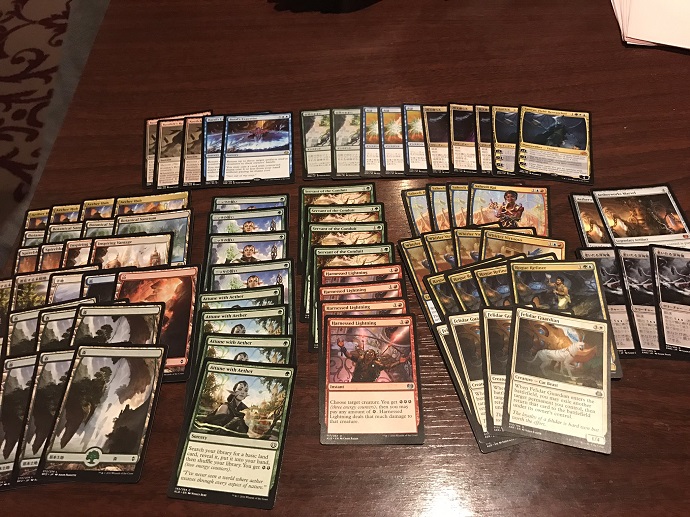
He mentioned a few things: that the deck could probably lose a land, that the sideboard could probably use Tireless Tracker, that the Spell Quellers were only okay, and that Baral’s Expertise was good against B/G. After playing a few games, I made the following changes to the deck:
- I cut an Evolving Wilds for an Ajani Unyielding. The card is a bit loosely positioned at the moment, but I wanted both a card that could singlehandedly find me the combo like Aetherworks Marvel and another card that was sweet to hit off Aetherworks Marvel. The card ended up wildly overperforming for me, since it turns out that digging for three permanents in a permanent-based combo deck is powerful, but it’s not the kind of thing I imagine you regularly want to be doing in the format.
- I wanted to not have Authority of the Consuls represent a significant problem for me, so I cut the Natural Obsolescences and replaced them with Root Out.
- Baral’s Expertise and Spell Queller seemed good but inessential to me, so I cut one of each for two Tireless Trackers.
This left me with:
Creatures (19)
Planeswalkers (5)
Lands (22)
Spells (14)

This deck is insane and I wholeheartedly endorse it. The only changes I’d make are a) probably cutting the Evolving Wilds for an Aetherworks Marvel, though for multiple reasons that makes it harder to side out Servant, which I wind up doing a fair bit of the time; and b) ix-naying the Quellers for the second Baral’s Expertise and a Shock. It’s annoying that you have to keep in Servant when you bring in Kozilek’s Return, so I briefly considered Aether Theorist, but the card is just too much worse of a Magic card and is especially worse if you’re going up to three Marvels.
The deck is extremely complicated and a bit counterintuitive, so it’s worth going through some of the key decision points and critical interactions:
- The first thing to realize is that you have three distinct “modes.”
- On one level, you’re a Jund-style midrange value deck, capitalizing on the Oath of Nissa plus Felidar Sovereign interaction as well as cards like Rogue Refiner, Aetherworks Marvel, and Ajani Unyielding to keep gasoline in the tank at all times. Whirler Virtuoso both keeps you alive and turns on aggressive mode as you Saheeli your value creatures in order to press your advantage.
- On a second level, you’re a Splinter Twin-style combo deck. Saheeli Rai plus Felidar Guardian can kill out of nowhere, with Elder Deep-Fiend tapping them down and Servant of the Conduit ensuring that it’s fairly easy to get to six mana so that you can cast Guardian and Saheeli in the same turn without exposing Saheeli to damage. Oath of Nissa, Aetherworks Marvel, Ajani, and Rogue Refiner dig you to your combo pieces while Whirler Virtuoso keeps you alive.
- Finally, on a third level, you’re a Mistbind Clique deck. Rogue Refiner and Whirler Virtuoso make it awkward for your opponent to trade or attack you profitably until eventually you find a window to tap your opponent out and copy Elder Deep-Fiend with Saheeli for a giant chunk of damage.
The first two of these properties give the deck a good Mardu Vehicles matchup. It’s difficult for Mardu to keep pressure on you while also holding up removal to disrupt your combo—and if they’re not pressuring you, you’re simply drawing too many cards for them to keep up. Meanwhile, Whirler Virtuoso generates tremendous advantage because Mardu has to go all-in on a couple of big attackers that get chump-blocked fairly trivially.
- The possession of each of these modes makes it a nightmare to sideboard against you. If your opponent goes too nuts on something like Authority of the Consuls, you’re more than happy to sit around drawing cards with all your value creatures until you eventually beat them with Elder Deep-Fiends. Conversely, if your opponent prepares themselves for a tap-out midrange grind-fest, you can have them dead at any instant—or, if they try to combat your Elder Deep-Fiend plan tapping them out by leaning on something like Ceremonious Rejection, you have the option of leaning on Tireless Tracker to present must-kill threats while they sit on a dead card.
- In order to take advantage of this, though, you have to be willing to do this little dance. I’m almost never presenting the same configuration for Games 2 and 3—even against the same matchup—because I am trying to adapt in real-time to what they seem to be prioritizing, valuing, or adapting around.
- A few specific gameplay quirks are worth learning about before you sleeve up the deck:
- Elder Deep-Fiend is amazing with Saheeli, but is not as amazing as you want it to be because Fiend’s ability is a cast trigger.
- Saheeli’s second ability, though, is all kinds of amazing for an Elder Deep-Fiend that is already in your hand, since it will let you get away with not sacrificing a “real” creature—while getting you some value in the process.
- Saheeli’s +1 ability is actually really good in this deck because both the damage and the scry matter. You also have Aetherworks Marvel to go get with the ultimate, which definitely matters in the longer/grindier games.
- Aetherworks Marvel’s legendary status is secretly an upside, as you can cast two Marvels into one another and get two energy. You can also get energy by binning redundant Oaths of Nissa.
- Whirler Virtuoso is the card that matters most to the Elder Deep-Fiend / “Faeries” plan, since you have to do things like calculate a few turns in advance how many Thopter attacks you’ll need to Fiend/Saheeli Fiend/kill them when you turn your team sideways. This will in turn lead to plays where you have to see how many Saheeli “plinks” you think you can get without exposing her to risk of dying.
- Because you’re an Aetherworks Marvel deck, you’ll find yourself Harnessing some Lightning just to get three energy a reasonable amount the time.
Against Mardu, your plan really is very, very simple:
- First, trade with everything imaginable and avoid dying. Ideally, dig for the combo while you’re doing this. Whirler Virtuoso is absolutely your friend here in this endeavor.
- Second, cast an Elder Deep-Fiend to take out their red sources first (for Shock and Disintegration) and then their black sources (for Fatal Push).
- Finally, combo them.
After sideboarding, you’re on the same plan, except you have access to Kozilek’s Return which can wipe their battlefield at instant speed. This makes the third part of the above process less important, though you’re still keeping the combo in because each of the individual Magic cards is very good.
Leveraging this whole reasoning process, John and I swept the Sunday tournament (with W/R and Four-Color Saheeli), beating all of the major applicable matchups and losing only to one another. Given that I haven’t thought strategically about a Magic metagame for something like two years, it felt disproportionately good to do this.
The point of my citing the ability to win games of Magic at random local tournaments has nothing to do with the desire to somehow use those victories as evidence that a given deck is good or bad. Plenty of people who write Magic articles for a living will come up with decks that reliably beat Mardu Vehicles—or they won’t, and the deck will dominate for a while, and something will get banned.
Rather, the reason I’ve spent over 7,000 words walking through this whole testing/reasoning process in an obscene amount of detail is to reinforce one and only one real point: there is always, always, always something you can do in the aftermath of dominance.
Because here’s what’s awesome about being part of a community: it doesn’t actually matter how much of what I said above is dumb or misguided or wrong or foolish or feckless or whatever. If 15% of it is valuable and 85% is garbage, you can take that 15% and attach it to what you know or what you think or what e.g. Sam Black or Ari Lax or Patrick Chapin knows or thinks, and in the process we can move our collective understanding forward.
And it’s just so important to keep this front and center in our minds, with like neon-electric-blue-green-yellow flashing/strobing LED arrow-signs: the hope that comes with action, with community, with work and thinking and testing and the occasional miracle-spark of hard-won insight. That is why we play and love this game.
I’m saying this because coming home on Sunday, already the Internet was awash with eschatology:
“How do you ban three cards only to get this homogenous of an environment?”
“Do the people at Wizards have any idea what they’re doing at all?”
“I’m never playing Standard again!”
But remember Pro Tour Berlin 2008? Seven Elves decks in the Top-8—yet the format was totally fine. Conversely, Caw-Blade didn’t put six decks into the Top 8 of Pro Tour Paris after Mirrodin Besieged—but it was certainly a completely oppressive deck. The PT tells us very little, and we have a lot of time to dig for answers.
As Richard Garfield himself has mentioned before, having a Public Enemy #1 can actually be a good, interesting thing. It keeps us vigilant. It asks us to be creative. It causes us to never settle for less than the best we have to offer.
Over the course of my life, I played Magic for many reasons. At first it was for discovery: the pure joy of a beautiful, rich, robust game. Then it was for growth, to venture outside of Memphis and make friends literally all over the world. For a time, it was for excellence—an opportunity to demand the most of myself I could muster, and see where it would stand. Eventually, it was for my livelihood, the opportunity to experience the unparalleled experience of sustaining myself off the fruits of my creativity.
Now, in the twilight? It’s for memory—a memory of a specific kind.
Once upon a time, the limits of your experience were bounded such that you’d devote the whole of your genius to reducing your opponent’s life total from twenty to zero ever-so-slightly more quickly than they could do the same to yours. This simple goal nevertheless demanded a level of strategic and operational clarity and creativity so as to justify innumerable hours spent advancing its cause. Eventually, experience expanded in all its vastness to demand a less-obsessive kind of attention to this game—and with the dilution of that obsession came an unbearable feeling of absence, the feeling of having climbed and fallen from some near-infinite height.
Having reached the summit once, however, you remember what it looked like to have seen the sun. And that memory is important, critical, life-sustaining—because the nature of your experience these days demands that you achieve some insight about some systems that are way more complicated than the good old march from twenty to zero. You don’t necessarily understand them; you’re certainly not a master of them; and, by the looks of things, your worst matchup just put six copies of itself into the Top 8 while you were busy thinking the format was all about casting Glimmer of Genius.
So what are you going to do, then? Despair? You don’t even own any Hearts of Kiran. Your opponent will probably always have Exemplar in their opener. And with all the time spent on preview season these days, the next large set will be coming out before you know it. You know what? Sitting out, come to think of it, might just not be that bad.
—
Nah. We’re winning this one. Shuffle up. We’ve got some work to do.


